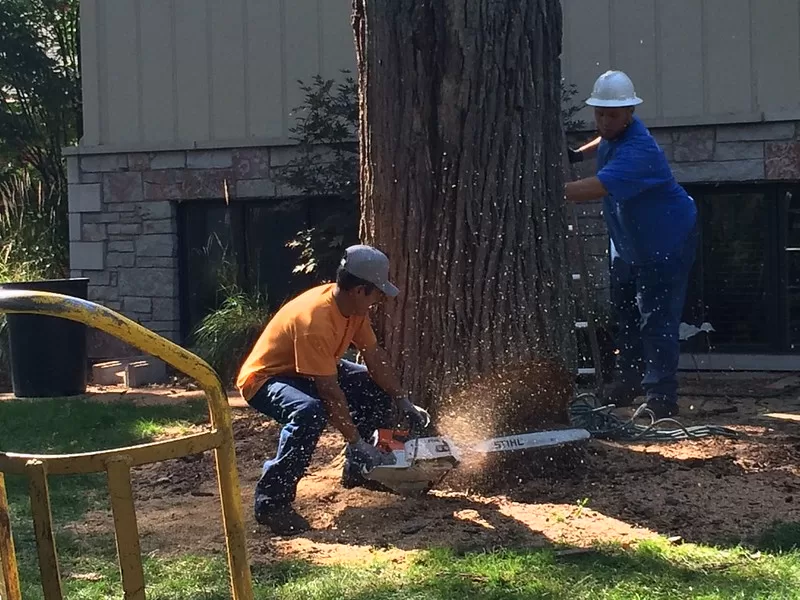Removing a tree can be a daunting task, but with the right tools and knowledge, it can be done safely and efficiently.
Whether you’re removing a tree to make room for a new building or because it’s posing a danger to your property, it’s important to take the proper steps to ensure that the job is done correctly.

In this guide, we’ll take you through the process of tree removal step by step, from assessing the tree to grinding the stump.
The first step in tree removal is to assess the tree and determine if it can be removed safely. Here are some things to consider read more about tree surgeon in Nottingham.
If the tree poses a danger to your property or the surrounding area, it’s best to hire a professional tree removal service.
Read Also:
If you’ve decided to remove the tree yourself, you’ll need the right tools to get the job done safely. Here’s what you’ll need:
Before making any cuts, plan the direction in which you want the tree to fall. Consider any obstacles or structures that may be in the way, and plan the fall direction accordingly.
Clear the area around the tree to ensure that there are no obstacles in the way of the tree’s fall. This includes removing any debris or objects that may be in the fall zone.
Use the chainsaw to make a notch in the tree on the side where you want it to fall. The notch should be about a quarter of the diameter of the tree, and it should be made at a 45-degree angle.
Once the notch is made, make a back cut on the opposite side of the tree, about 2 inches above the bottom of the notch. This will help guide the tree in the direction you want it to fall.
The area between the notch and the back cut is known as the hinge. This area should be thick enough to hold the tree upright as it falls. Make sure the hinge is not too thick or too thin.
Once the back cut is made, retreat to a safe distance away from the tree. Do not stand directly behind the tree, and do not turn your back on the tree.
As the tree begins to fall, use the rope to guide it in the direction you want it to fall. If necessary, use the axe or hand saw to make any final cuts to direct the fall.
After the tree has fallen, you’ll need to remove the stump. You can do this by digging it out with a shovel or using a stump grinder. If you’re using a stump grinder, make sure to follow the manufacturer’s instructions and wear PPE.
Start by removing the smaller branches from the tree, working your way from the top down. Use a chainsaw or hand saw to make clean cuts, and make sure to cut the branches close to the trunk. Use a rope to lower the branches to the ground.
Once you’ve removed all the branches, it’s time to remove the trunk. Start by making a horizontal cut on the side of the tree where you want it to fall. Then, make a second cut on the opposite side of the tree, slightly higher than the first cut. Finally, make a back cut that meets the first two cuts, allowing the tree to fall in the desired direction.
After the tree has fallen, you’ll need to remove the stump. You can do this by digging it out with a shovel or using a stump grinder. If you’re using a stump grinder, make sure to follow the manufacturer’s instructions and wear PPE.
Finally, it’s time to clean up the area. Cut the tree trunk and branches into manageable pieces and dispose of them properly. Fill in the hole left by the stump with dirt and cover it with grass seed or sod.
Removing a tree can be a challenging task, but by following these steps, you can ensure that the job is done safely and efficiently. Remember to always assess the tree before attempting to remove it, gather the right tools, and wear the proper PPE.
If you’re unsure about any aspect of tree removal, it’s best to hire a professional. With the right knowledge and equipment, you can successfully remove a tree and make your property safer and more beautiful.